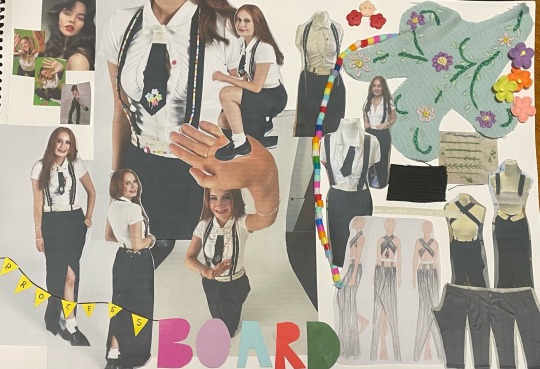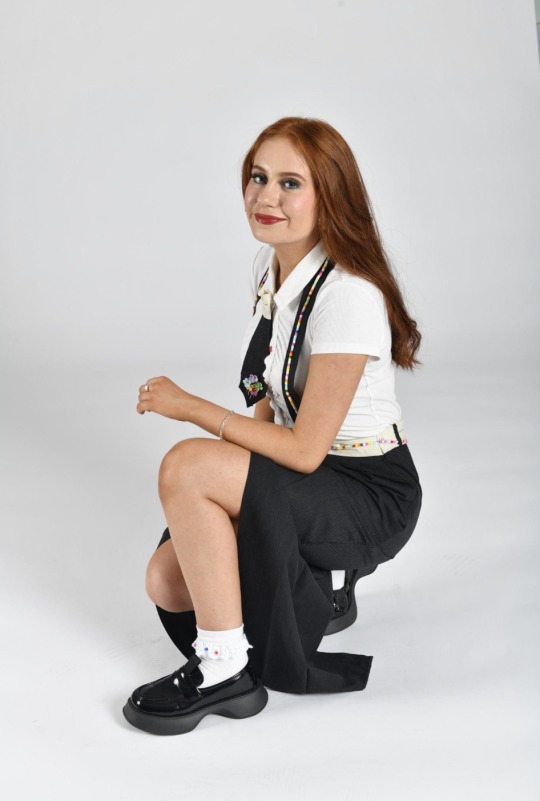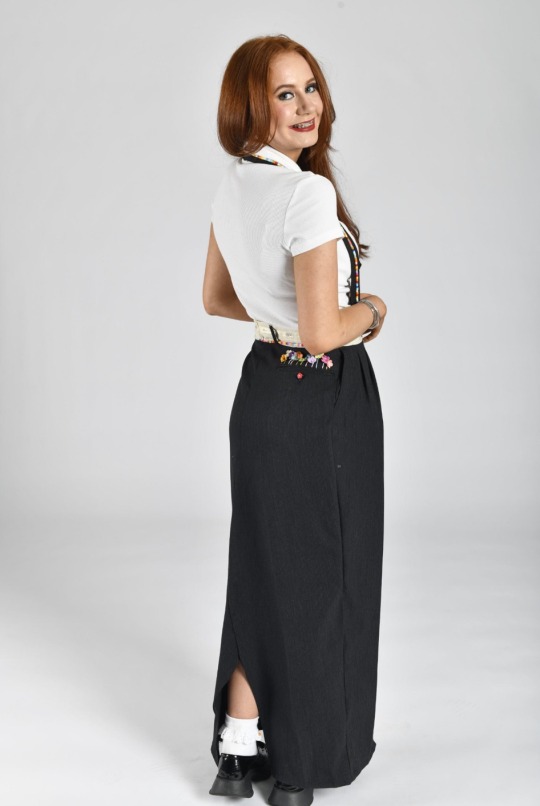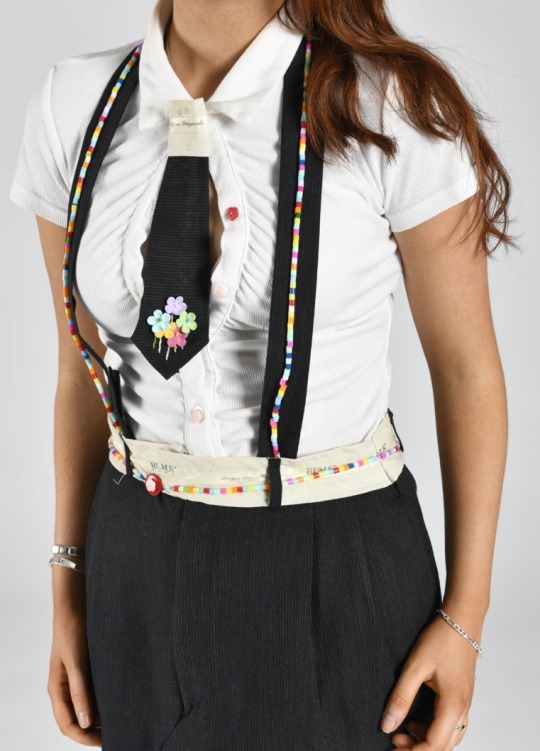Text
adding embroidery and beading
I wanted to add some fun and colour. I came across these ironing breads in a press in my room and wanted to see how they looked
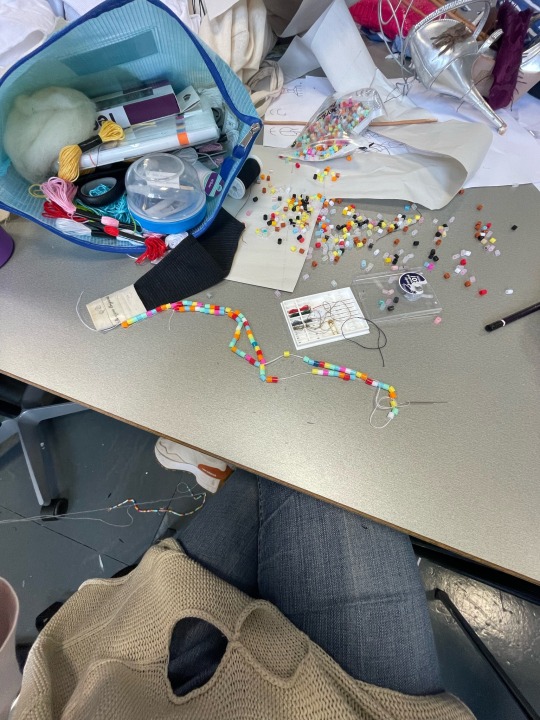

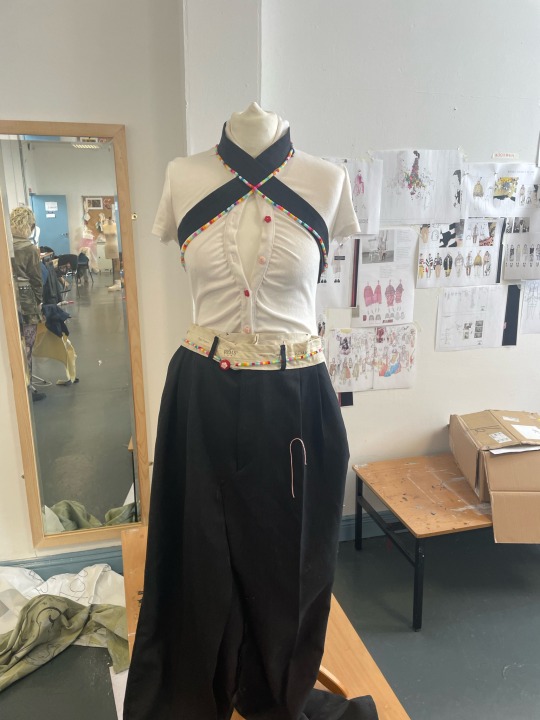
Love how it can out with the flowers on the pocket
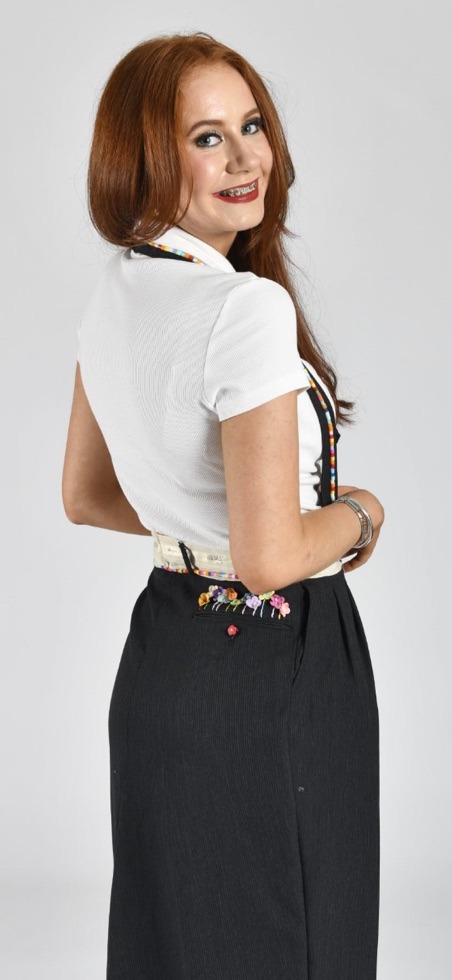
0 notes
Text
styling and fitting to the model
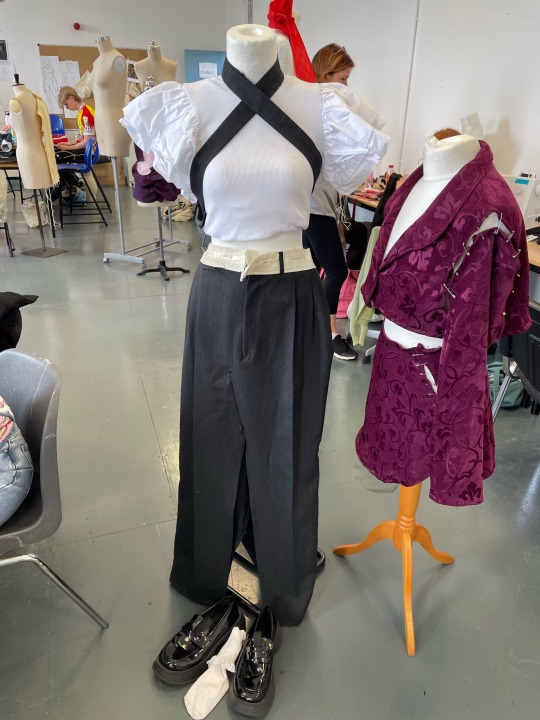
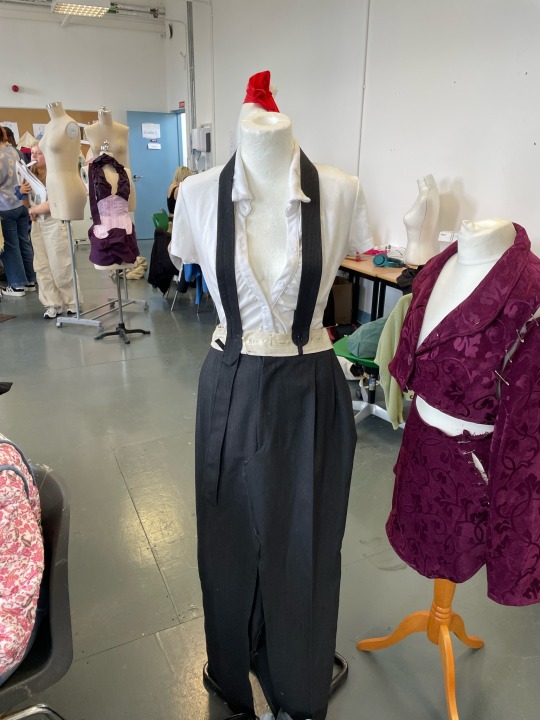
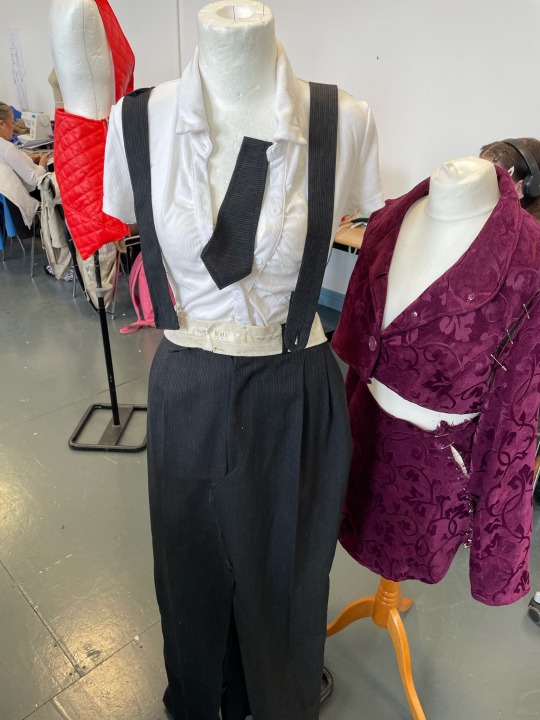
I had too ways I wanted to stay the skirt
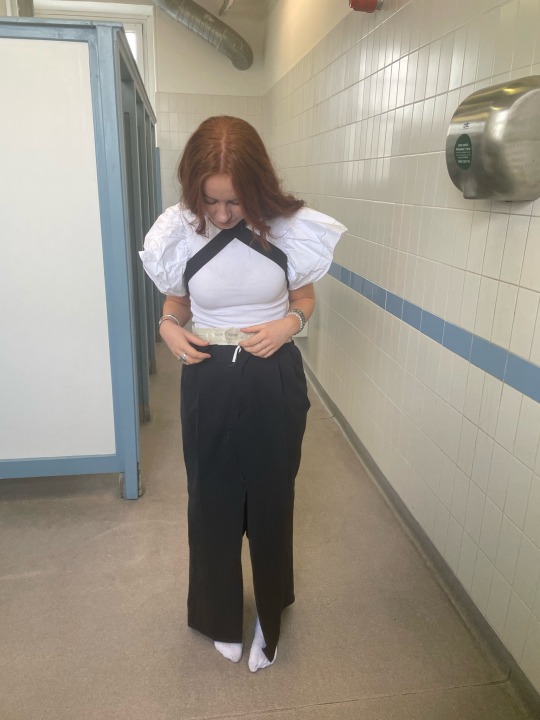
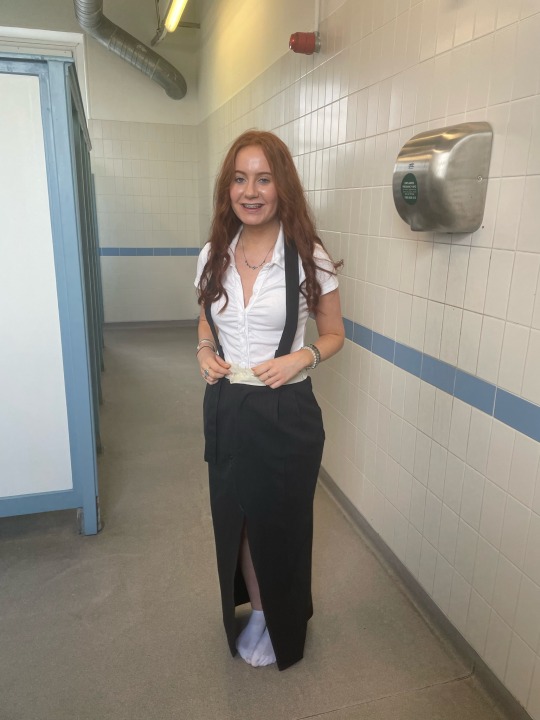
we desired on the shirt :)
0 notes
Text
pinning, sewing and problem solving on the way
a few pictures of me putting together the skirt and learning how to use a sewing machine

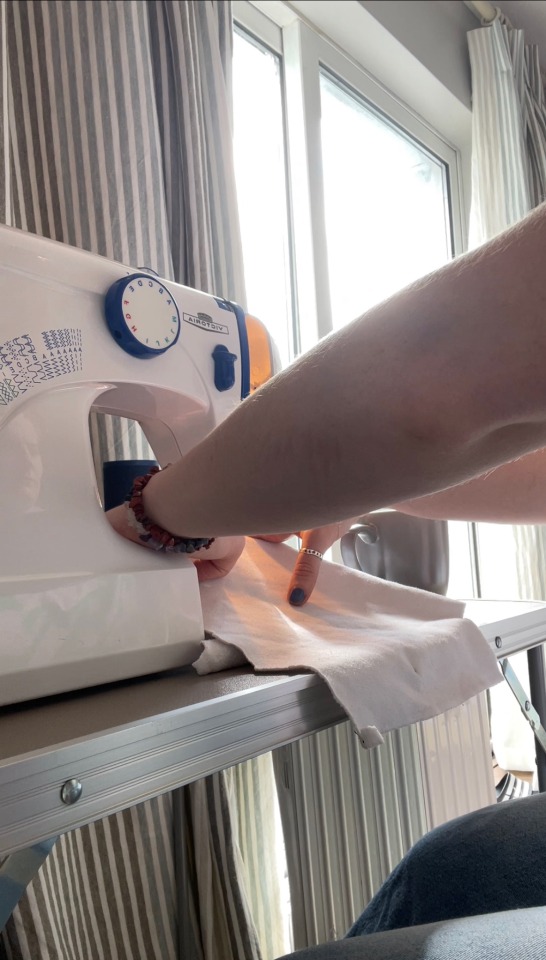
Leaning on a piece of scrap material
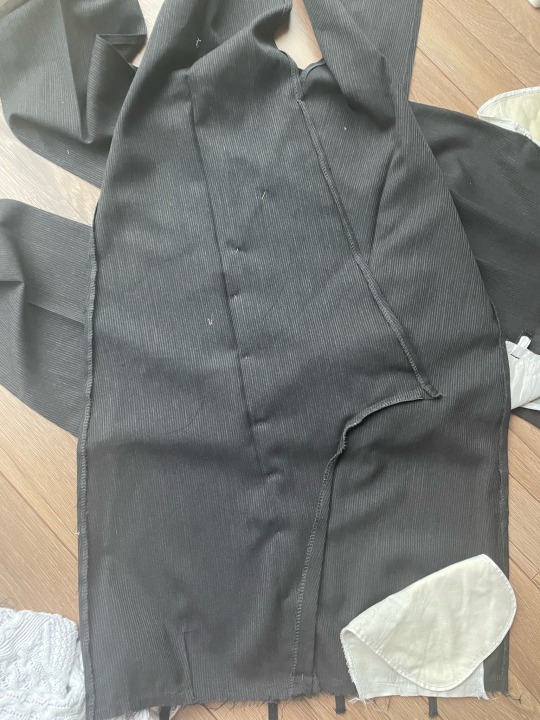

Pinning
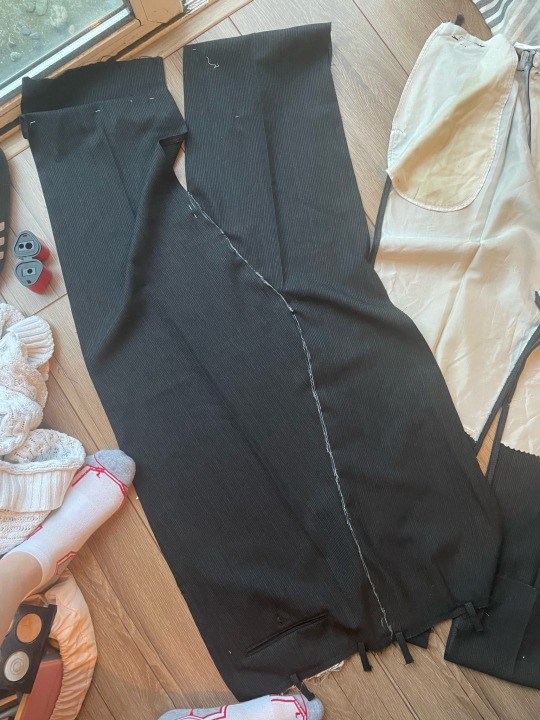
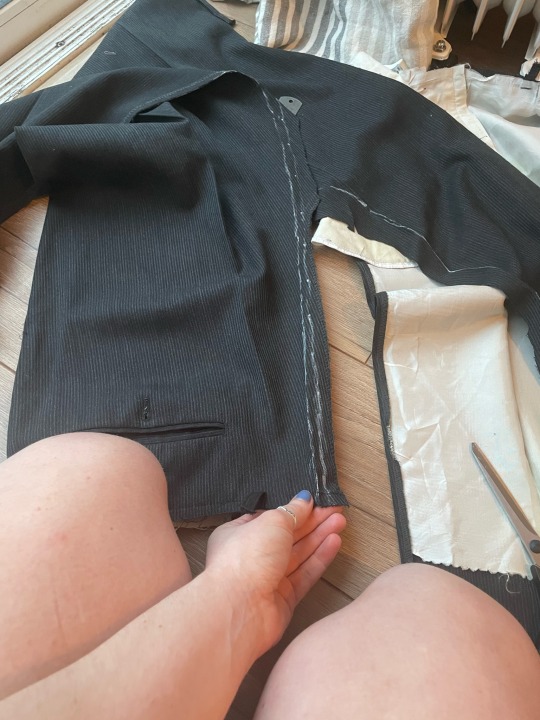
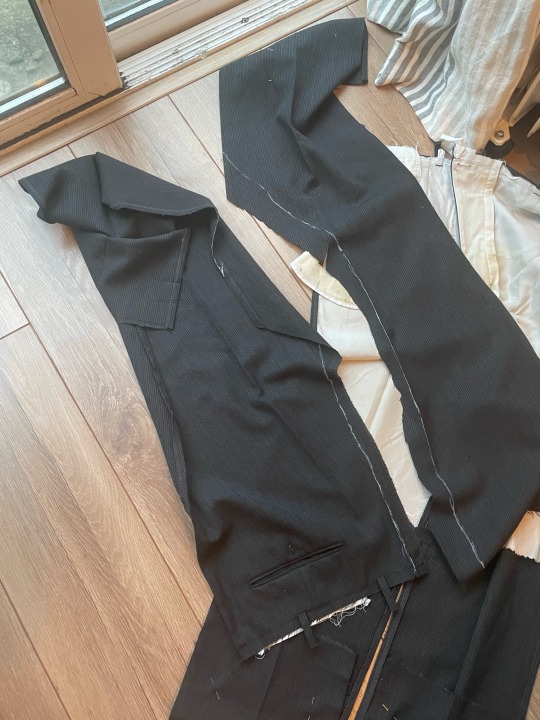
Drawing were I was to cut
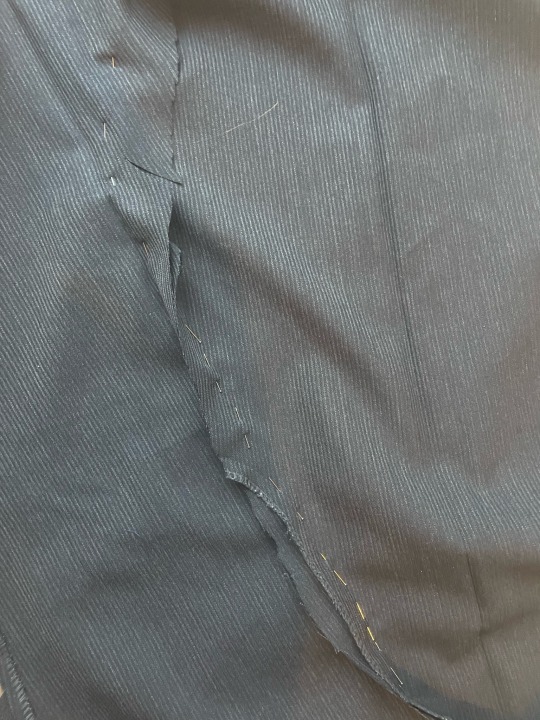
Sewing together
0 notes
Text
embroidery
We had a day of Ruth showing us different embroidery stitches. I loved these and learnt new ones while doing them.
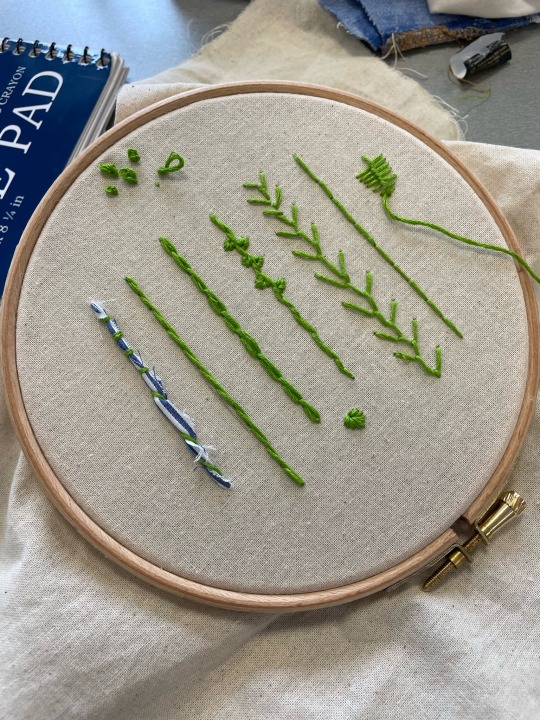
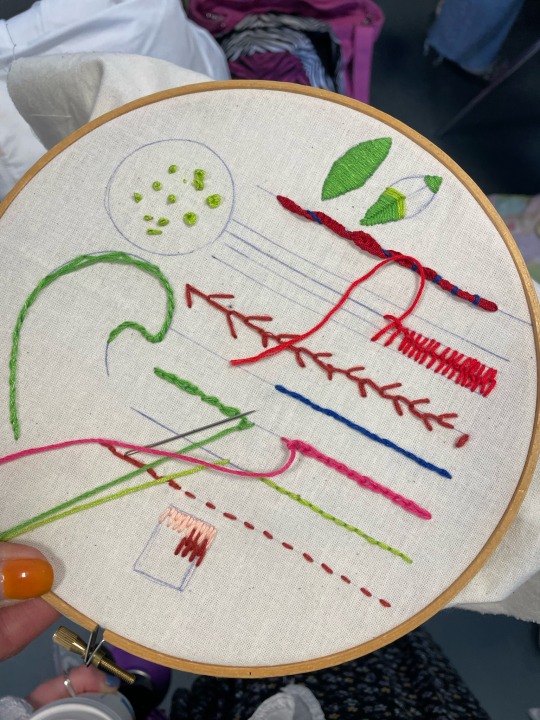
I have a tapestry from when I went to India. I wanted to have a look closer at the back after my day of embroidery. It’s cool seeing how much time my little pieces took and how detailed the tapestry is it must have taken ages to do.
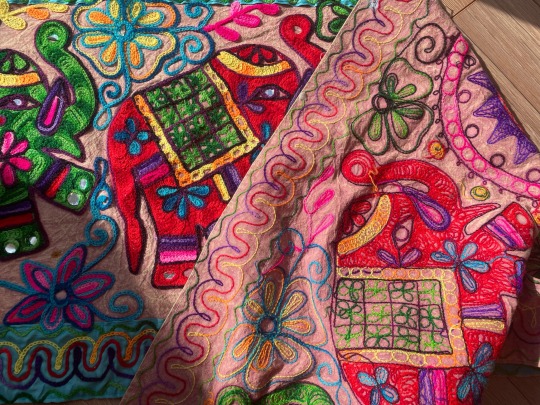
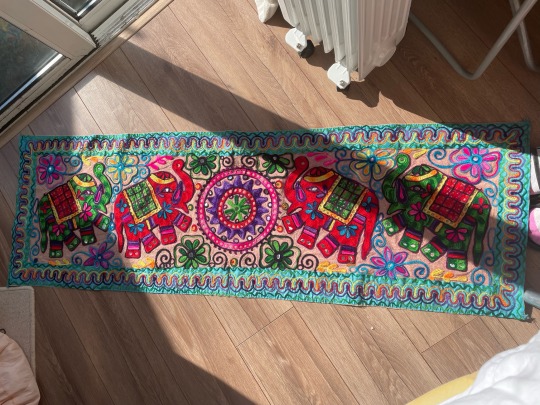

0 notes
Text
RE/DONE
contemporary designer using sustainable processes in their practice using recycling and upcycling.
Re/Done is the climate-conscious vintage denim brand that is dedicated to giving heritage denim from Levi’s a new life. Adored by A-listers and influencers alike, it’s time to join the circular denim movement.
vimeo
At their downtown Los Angeles workshop, Re/Done recreate jean styles by repurposing old Levi’s. Each style is made using water-conserving methods and without harsh chemicals. With a limited release, hand-picked and hand-cut in small batches each and every pair proudly reveals one-of-a-kind hallmarks of a life lived.
At the heart of their ethos is the idea of buying less and buying better by offering a hardworking classic that is the staple of everyone's wardrobe and the holy grail all-in-one, the perfect pair of jeans.
0 notes
Text
Selina Sanders
contemporary designer using sustainable processes in their practice using recycling and upcycling.
An upcycled fashion designer found treasure in furnishing textiles and home linens, Selina Sanders sources vintage materials like tea towels, curtains, quilts, blankets and other linens to create one-of-a-kind pieces that have details like detachable collars and reversible styles that offer you more than one way to wear them.
The business was born out of the pandemic. She had been working full-time as an apparel designer and the fashion industry got hit hard by closures and order cancellations from retailers, forcing the company lay off over 80% of their workforce.

Working at a fast fashion company, she didn’t really feel like she was utilizing her creativity to its best potential. She spent hours daily “copying” designs from brands that customers aspired to and the price points made it nearly impossible to make quality garments. On top of that, aware of the massive amounts of waste generated by the industry.
She had planned on quitting, and knew that if she did, would start her own company and basically do the complete opposite of what she had been doing at all the companies she had worked for in the past, in terms of production and design execution.

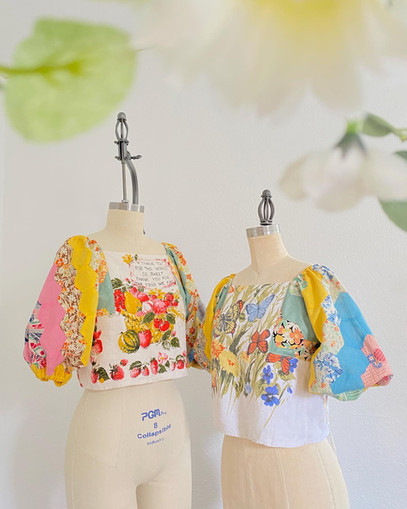
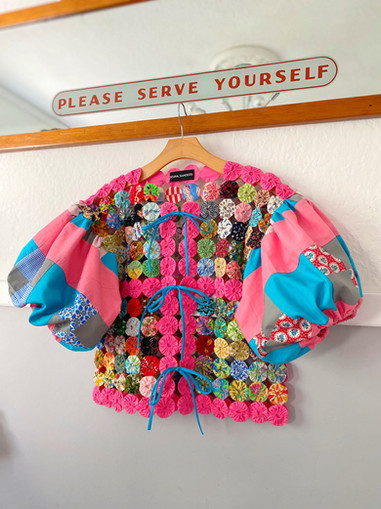
0 notes
Text
Sketches of the mannequins and extra sketches of developing ideas
0 notes
Text
FANFARE
contemporary designer using sustainable processes in their practice using recycling and upcycling.
Not only do they create upcycled looks but also feature a range of vintage pieces, along with a recycled clothing section on their site that showcases an impressive lineup of handpainted, embroidered and unique patchwork details.
Before setting up Fanfare Label, the founder, Esther Knight spent over a decade working as a buyer in the fashion industry. Experiencing first-hand over the years how fashion businesses drive their financial profits at the expense of the people who make the clothes and our precious planet, Esther recognised the need for urgent radical change and realised this was a broken system she could no longer, and would no longer, be part of.
Rather than leave the industry, Esther set her sights on creating a solution to transform not only the way garments are made but the way we buy, wear and consume clothing too. She talked to recycling plants and established relationships with key charities and Fanfare Label was born, a circular fashion brand that promotes a sustainable and moral way of doing things.
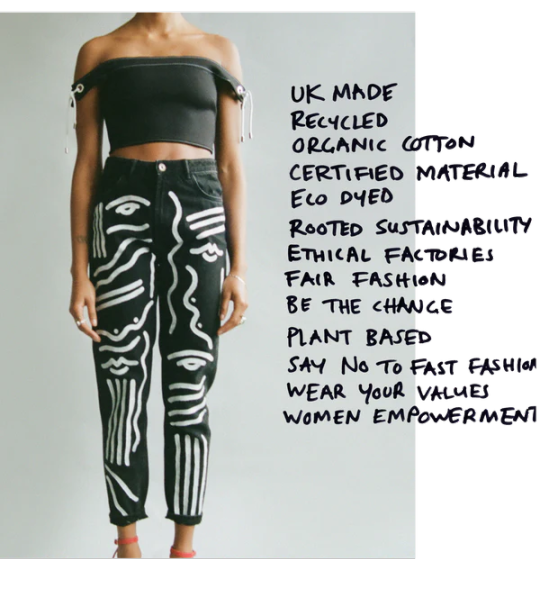
Fanfare is breathing new life into vintage pieces, deadstock fabrics and surplus clothing by transforming them into unique contemporary designs.
Not only do they create upcycled looks but also feature a range of vintage pieces, along with a recycled clothing section on their site that showcases an impressive lineup of handpainted, embroidered and unique patchwork details.

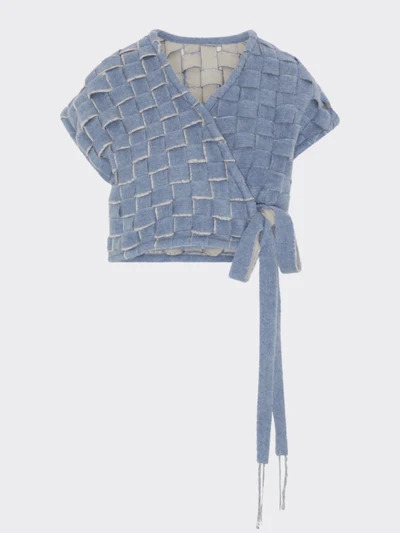

0 notes
Text
yohji yamamoto
contemporary designer at the forefront of Deconstruction processes.
Yohji Yamamoto is a master of the deconstructed style that has revolutionized fashion in the last 30 years. A style capable of deconstructing classic fashion with lines of pure poetry. Now it is he himself who has traced the way to revolutionize style, alter stereotypes, destabilize our concepts of clothing.

In 1972, a revolution stirred as Yohji Yamamoto began making menswear-inspired clothes for women in his hometown of Tokyo. Having spent a couple of years wandering around Europe, where he was awarded a scholarship to study couture dressmaking in Paris, he began to unpick every seam he had been taught to hand-stitch. Channelling the beauty of darkness and poetic destitution, he created enveloping silhouettes in purposefully aged fabrics in only the deepest, darkest shades of black, worn with pallid bare faces, flat shoes, and jauntily uneven hems and finishings.

A young Yamamoto-san had visited Vivienne Westwood and Malcolm McClaren’s epicentre of punk, Sex, a couple of years prior in London with his then-girlfriend Rei Kawakubo. It sparked a desire to destroy everything he was ever taught in order to sow the seeds for something new. “You will only be able to oppose something and to find something of your own after travelling the long road of tradition,” he explained in his own words.
The Yohji is always recognizable: large pockets clearly visible, revisited collars, oversized volumes, cuffs with doubled volumes, kimono sleeves, long coats open as if they were imperial capes and military prints that gain softness.
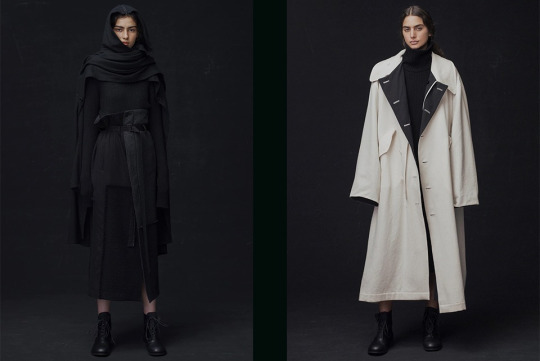
Since the establishment of Y's Company Ltd. in 1972, Yohji Yamamoto continues to spread his revolutionary, ever-widening sphere of influence in fashion, driven by his rebellious spirit.
Ever since the first presentation of his brand YOHJI YAMAMOTO in 1981 during Paris fashion week, each collection is greeted by the world with great uproar and applause. The designer entered into collaboration with adidas as Creative Director of Y-3 in 2002. He has also designed costumes in various fields, including films of directors Wim Wenders and Takeshi Kitano, opera by Wagner, and the performed by Tanztheater Wuppertal and choreographed by Pina Bausch.
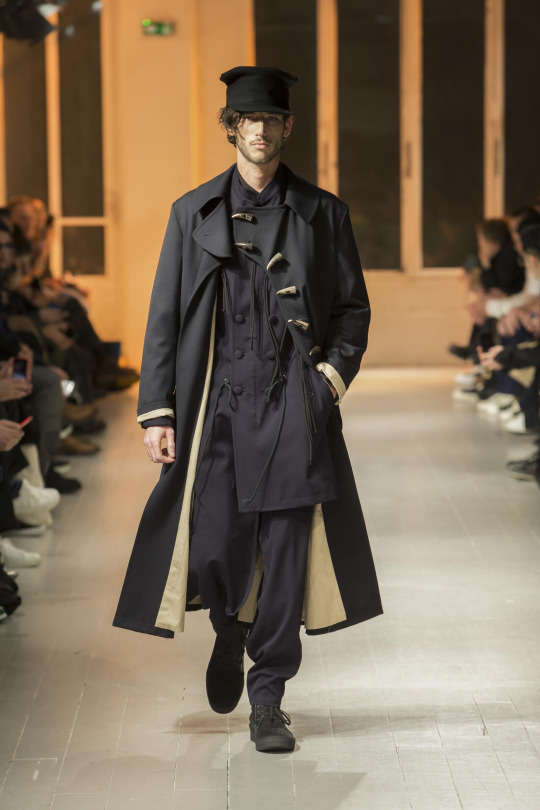
0 notes
Text
different ways of styling the pieces of fabric on mannequin
We had to take our ripped apart materials and come up with different ideas onto the body
front
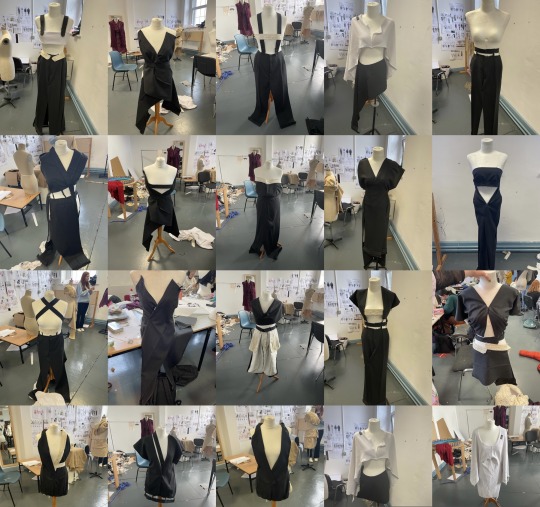
back and side
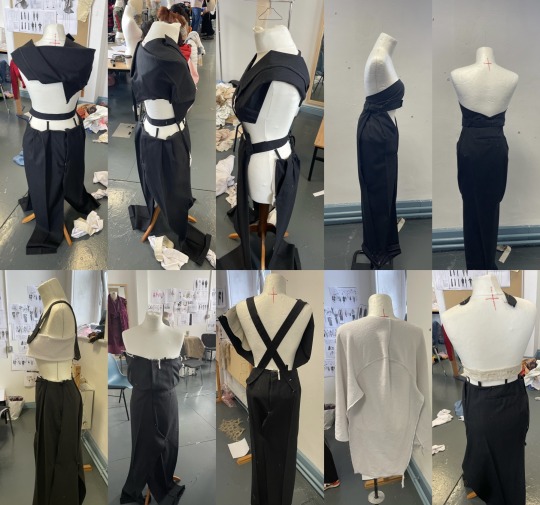
We tried to do front back and side if there was enough material to use
0 notes
Text
rei kawakubo
contemporary designer at the forefront of Deconstruction processes.
Rei Kawakubo of Comme des Garçons is one of the most visionary and influential designers working today. For nearly five decades, she has defied convention to redefine fashion. Her designs have subverted garment shape and function, reframed ideas of beauty, and proposed a new relationship between body and dress. In her endeavour to make clothes that ‘did not exist before. Kawakubo has deconstructed the vocabulary of clothing in order to create it afresh.
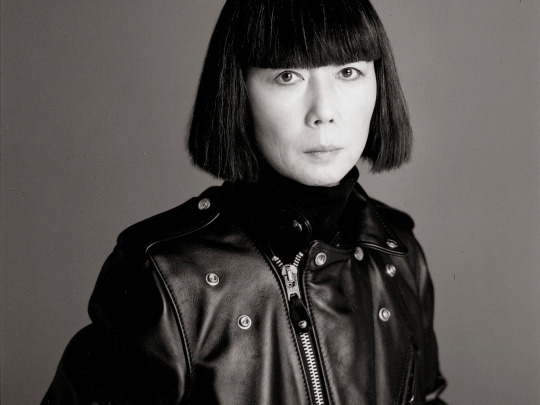
Rei Kawakubo is a Japanese fashion designer known for her avant-garde and unconventional designs. She established her fashion brand, Comme des Garçons, in 1969. Her designs are characterized by their deconstructed and asymmetrical shapes, monochromatic color palettes, and unusual fabrics. Kawakubo's designs have been featured in numerous fashion shows and exhibitions around the world. She has won several awards, including the Chevalier of the Order of Arts and Letters by the French government.
Kawakubo's work has been highly influential in the fashion industry, inspiring many designers and challenging traditional notions of beauty and femininity. Her designs often blur the lines between fashion and art, and she has been praised for her ability to create clothes that are both wearable and thought-provoking. In addition to her work in fashion, Kawakubo has also collaborated with other artists and designers, including the likes of Merce Cunningham and Cindy Sherman.
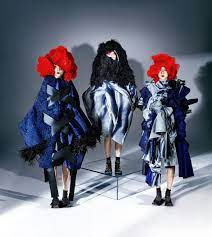
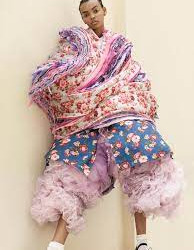
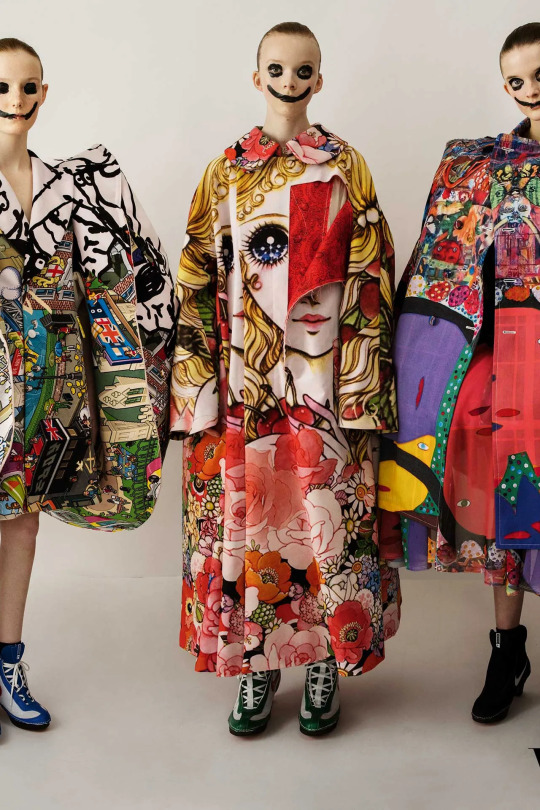
0 notes
Text
Vivienne Westwood
contemporary designer at the forefront of Deconstruction processes.
Vivienne Westwood is an iconic British fashion designer who has been a prominent figure in the fashion industry since the 1970s. She is known for her punk-inspired designs and her unconventional approach to fashion.
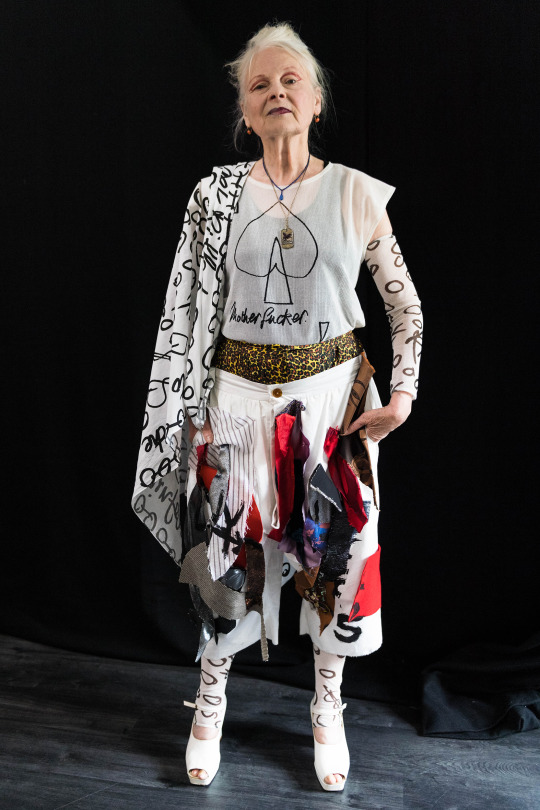
Born in Derbyshire, England in 1941, Westwood initially pursued a career in teaching before becoming interested in fashion. She began designing clothes in the early 1970s, and quickly gained a reputation for her unique style. In 1971, she met Malcolm McLaren, who would later become her partner and manager, and together they opened a boutique on London's King's Road called "Let it Rock."
Westwood's designs were heavily influenced by the punk movement of the 1970s, and she became known for her provocative and unconventional designs. She also pioneered the use of unusual materials and techniques in her designs, such as safety pins, chains, and tartan fabrics. Her designs often deconstructed traditional elements of clothing and combined them in new and unexpected ways, challenging traditional notions of fashion and beauty.
Throughout the 1980s and 1990s, Westwood continued to innovate and push boundaries in the fashion industry. She introduced new styles and trends, such as the mini-crini, a short, full skirt worn over a crinoline, and the pirate collection, which featured oversized shirts and baggy trousers.
Today, Westwood is still an influential figure in the fashion industry, and her designs continue to inspire and influence designers around the world. She has received numerous awards for her contributions to fashion, including a DBE in 2006 for her services to fashion.

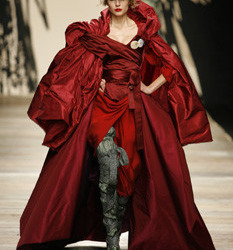
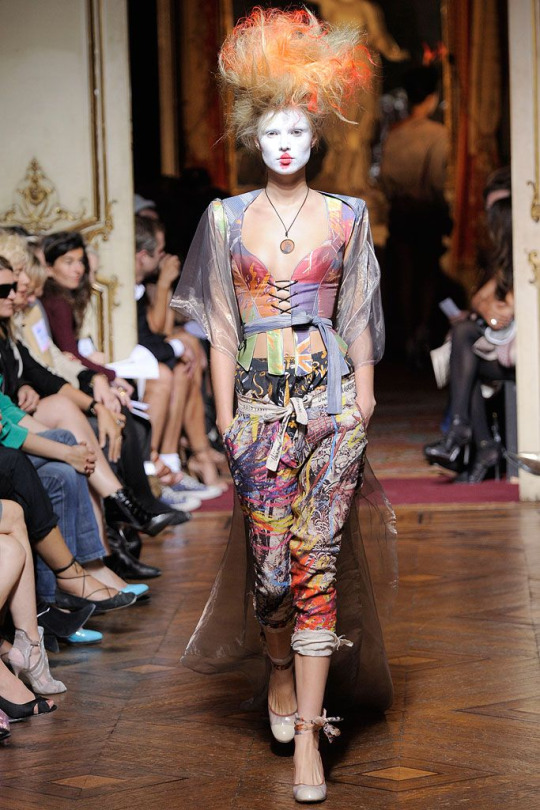
In conclusion, Vivienne Westwood is a true icon in the fashion industry, known for her unique and unconventional designs, and her pioneering use of materials and techniques. Her legacy continues to inspire and influence fashion designers around the world today.
0 notes
Text
ripping apart the garment carful using a ripper

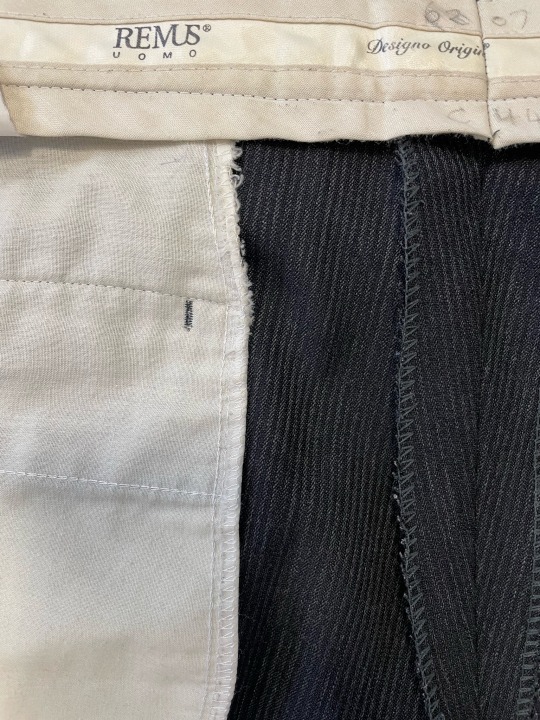
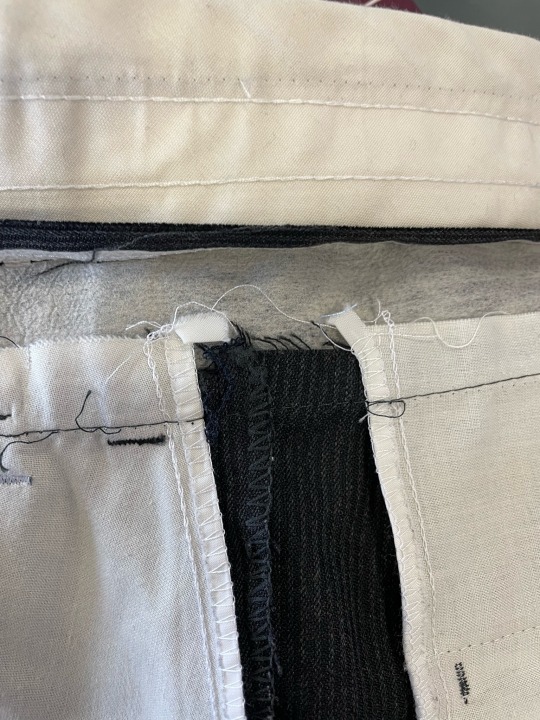
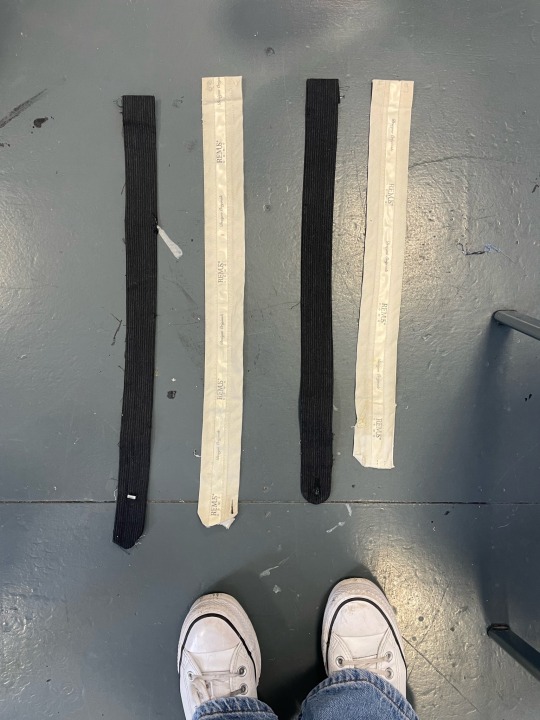
I used a ripper to take apart all the seams. I took them all apart until there was no more taking apart.
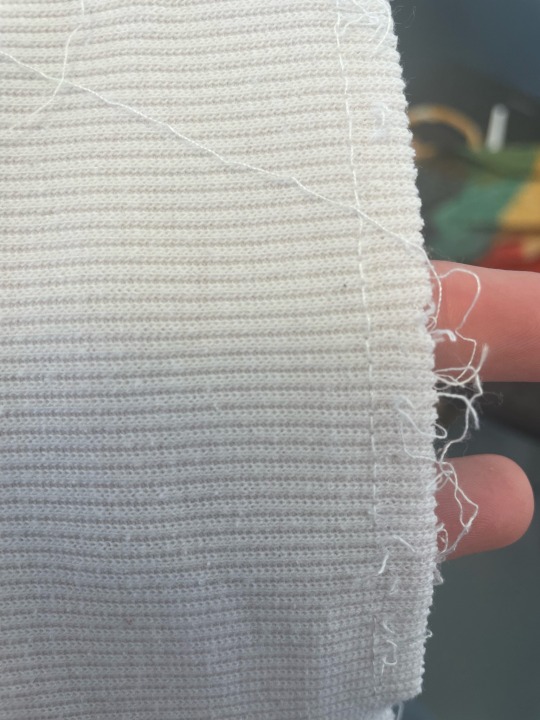

0 notes
Text
starting garments and research behind them
trousers
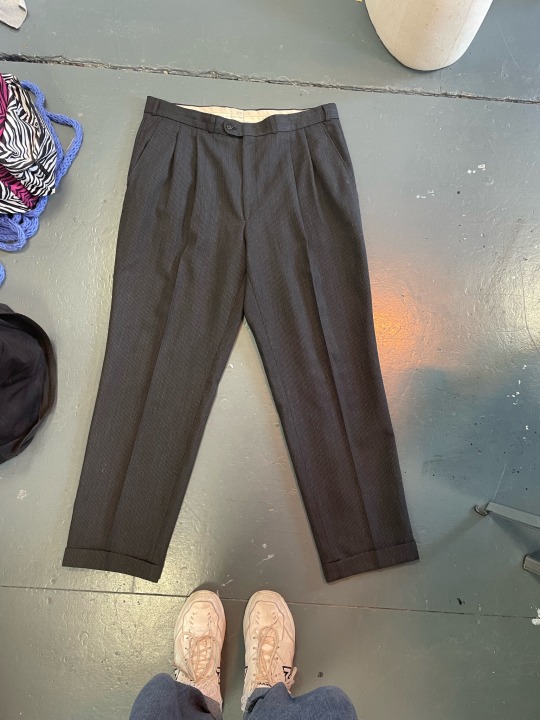
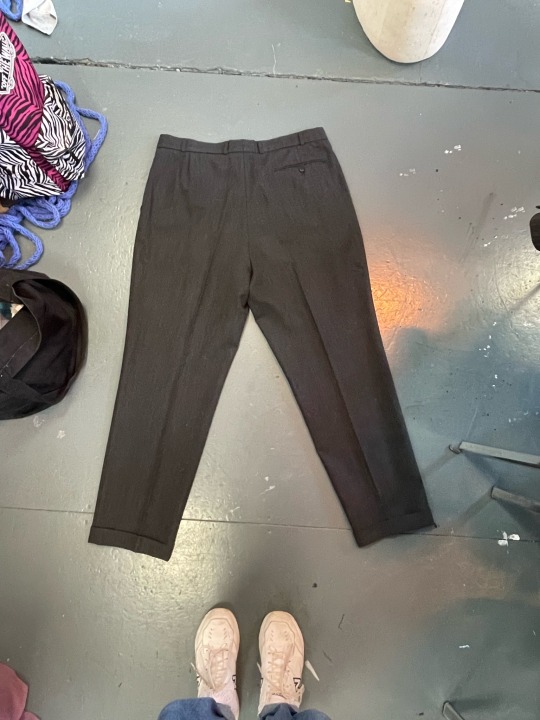


sweater


research
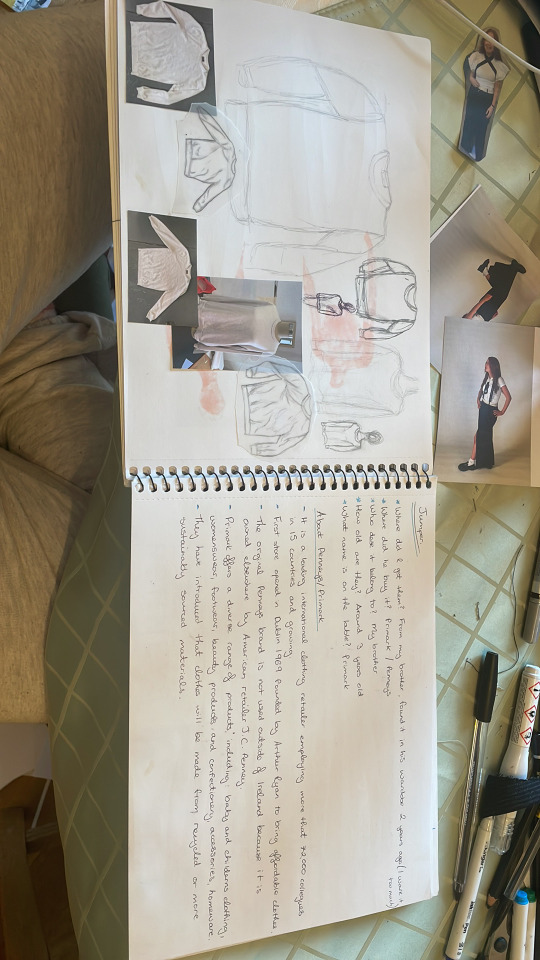

0 notes
Text
final submission

my response to movement i looked at flowing water how in Ireland it has shaped our landscape and dictated the location of our cities.
growing up living on a mountain in the countryside water was all around. from water streaming down the boreens to hearing the rain fall against windows to rivers being the local swimming pools in the summer. the movement of water brings us together, stuck inside together, running for shelter, splashing each other etc.
water always flow, it can transform making it destructed as well as construct on its way to the sea throw rivers and streams by cutting through the land making beautiful landmarks also flood planes. we have a love hate relationship with water in Ireland and in the world.
when I see, hear, touch water I feel at home where ever i am around the world. its like a warm familiar hug, the same way it hugs our land making townlands and islands its hugs us.
in the following posts you will be able to see how i brought this idea into my three disciplines sculpture, fashion and graphic design, and how I connected all of them with water.
I really enjoyed using my previous pieces and bringing it into another discipline, it really makes you think outside the box. It has shown me that you can bring anything into art and if it makes sense, you understand and love it that's all that matters as i do.
3 notes
·
View notes
